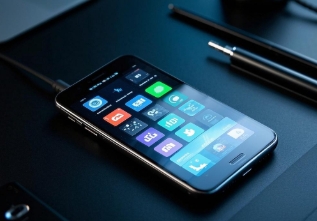Mobile Enterprise Security: Protecting Your Business in a Mobile-First World
The Urgent Need for Robust Mobile Enterprise Security
Recent events underscore the critical, often precarious, state of mobile enterprise security. Take, for instance, the recent claims by hackers to possess the details of 64 million T-Mobile customers. While T-Mobile vehemently denies a new breach, and reports from Cybernews show a data sample, the situation remains murky. This isn't T-Mobile's first rodeo either; past incidents in 2018, 2021, and 2023 led to a $15 million fine for previous breaches.
This unsettling scenario highlights a major pain point for businesses and users alike: the sheer volume of mobile devices and their scattered management significantly amplify security risks. From data breaches and phishing attacks to malware and insider threats, the pervasive use of mobile devices creates a vast and complex attack surface that demands sophisticated mobile enterprise security solutions.
1Defining Mobile Enterprise Security and Its Critical Importance
Mobile enterprise security refers to the strategies, technologies, and policies implemented to protect an organization's data, applications, and infrastructure from threats originating from mobile devices. In today's business landscape, mobile devices are ubiquitous. Employees routinely access sensitive corporate data, communicate with clients, and perform critical tasks from smartphones and tablets.

This widespread adoption, while boosting productivity and flexibility, introduces a myriad of security risks:
Access to Sensitive Data: Mobile devices often store or access confidential company information, making them prime targets for data theft.
Lack of Control: Managing a diverse fleet of personal and corporate-owned devices spread across various networks makes traditional perimeter security less effective.
Vulnerability to Public Networks: Employees frequently connect to unsecured public Wi-Fi networks, exposing corporate data to eavesdropping and interception.
Ease of Loss or Theft: Mobile devices are small and easily misplaced or stolen, leading to potential unauthorized access if not properly secured.
Effective mobile enterprise security is no longer optional; it's a fundamental requirement for business continuity, data integrity, and compliance.
2Understanding the Diverse Landscape of Mobile Threats
The threats to mobile enterprise security are multifaceted and constantly evolving. Businesses must be aware of the most common vectors:
Phishing: Highly targeted fraudulent attempts to trick users into revealing sensitive information (like login credentials) via deceptive emails, texts (smishing), or websites. Given the smaller screens and quicker interactions on mobile, users can be more susceptible.
Malware (including Ransomware and Crypto-mining): Malicious software designed to disrupt, damage, or gain unauthorized access to mobile devices. This includes:
1. Ransomware: Encrypts device data and demands a ransom for its release.
2. Crypto-mining Malware: Uses a device's processing power to mine cryptocurrency without the user's consent, draining battery and slowing performance.
Insecure Public Wi-Fi: Connecting to untrustworthy public networks can expose data to man-in-the-middle attacks, where attackers intercept communications.
Insider Threats: Malicious or accidental actions by current or former employees who have legitimate access to company data, leading to breaches or data loss.
Outdated Software: Unpatched operating systems and applications contain known vulnerabilities that attackers can exploit.
Cloud Misconfigurations: Errors in setting up cloud services or storage can expose sensitive data accessible via mobile devices to the public internet.
3Proactive Protection Measures and Best Practices for Mobile Enterprise Security
To effectively counter these threats, organizations need a comprehensive approach to mobile enterprise security. This involves a combination of robust policies, cutting-edge technologies, and continuous user education.
1Comprehensive Security Strategy
1. Mobile Device Management (MDM): MDM solutions allow IT teams to manage and secure all mobile devices (corporate-owned and BYOD) from a central console. Key features include device enrollment, configuration, app distribution, and remote wipe capabilities.
2. Mobile Application Management (MAM): MAM focuses on securing and managing individual corporate applications on mobile devices, ensuring that only approved apps are used for business data and enforcing granular policy controls within those apps.
3. Mobile Threat Defense (MTD): MTD solutions provide real-time threat detection and remediation for mobile devices, protecting against malware, network attacks, and phishing attempts that bypass traditional defenses.
2Integrated and Multi-Layered Security
Implementing mobile enterprise security also means integrating multiple layers of defense throughout the device's lifecycle:
1. Zero Trust: This concept is paramount: "Never trust, always verify." It means verifying every user, device, and application attempting to access corporate resources, regardless of whether they are inside or outside the traditional network perimeter. This minimizes the risk of unauthorized access.
2. Real-time Behavior Analysis: Continuously monitoring device and user behavior for anomalies that could indicate a compromise.
3. Vulnerability Scanning and Automated Patch Management: Regularly scanning devices and applications for security weaknesses and ensuring that all software is promptly updated to patch known vulnerabilities.
4. Strong Authentication: Implementing multi-factor authentication (MFA) for all corporate accounts.
5. Data Encryption: Encrypting data both at rest (on the device) and in transit (over networks) to protect it from unauthorized access.
4AirDroid Business: A Solution for Enterprise Mobile Security
AirDroid Business is a prime example of an MDM software that significantly enhances mobile enterprise security.
AirDroid Business Functions
AirDroid Business provides a robust suite of features designed to manage and secure an organization's mobile fleet comprehensively:
Remote Control & Access: Securely access and control unattended Android devices for troubleshooting, maintenance, and support.
Device Grouping & Organization: Easily categorize and manage thousands of devices based on department, location, or function.
Application Management: Centrally deploy, update, and remove applications, including force installations and silent updates.
Kiosk Mode: Lock devices down to a single application or a pre-approved set of applications, ideal for dedicated purpose devices like POS systems or digital signage.
Geofencing & Alerts: Define virtual boundaries and receive alerts if devices move outside designated areas.
Security Policies & Compliance: Enforce password policies, Wi-Fi configurations, and blacklists/whitelists for applications and websites.
Monitoring & Alerts: Real-time device monitoring, data usage alerts, and low battery notifications.
AirDroid Business has gained recognition for its user-friendly interface and powerful capabilities, making it a reliable choice for businesses seeking comprehensive mobile enterprise security and device management.
AirDroid Business Customer Case Study: Enhancing Field Service Efficiency with Secure Device Management
A leading field service company with hundreds of technicians relied heavily on Android tablets for daily job dispatches and sensitive customer data access. Their biggest headaches were managing scattered devices and securing data on the go. Technicians often faced app issues or device malfunctions, causing costly trips back to the office for IT support and significant downtime.
By implementing AirDroid Business, the company transformed its mobile operations:

Remote Issue Resolution: If a technician's tablet froze, IT could remotely reboot or silently update apps in minutes. This drastically cut down on travel and eliminated downtime.
Enhanced Data Security: They deployed AirDroid Business's Kiosk Mode, locking tablets down to only essential work apps. If a device was lost, remote wipe ensured sensitive customer data was instantly protected.
Boosted Efficiency: Technicians gained confidence with reliable remote support and a secure environment, allowing them to focus on service calls and improve overall productivity.
This case shows how AirDroid Business directly addressed mobile enterprise security needs, driving efficiency and business continuity.
5Key Considerations and Risks for Mobile Enterprise Security
When implementing or enhancing mobile enterprise security, several critical aspects must be considered:
Integration with Existing Security Architecture: Mobile security solutions must seamlessly integrate with your current security infrastructure, including VPNs, endpoint protection platforms, Identity and Access Management (IAM) systems, and your broader Zero Trust strategy. A fragmented security approach creates blind spots and weakens overall defense.
Compliance Requirements: Organizations must ensure their mobile security practices comply with relevant industry regulations and data privacy laws. This includes:
1. GDPR (General Data Protection Regulation): For data handled within the EU.
2. CCPA (California Consumer Privacy Act): For data handled within California.
3. ISO Standards (e.g., ISO 27001): For information security management.
4. HIPAA: For healthcare data.
5. PCI DSS: For payment card industry data. Failure to comply can result in severe legal penalties and reputational damage.
Continuous Evolution of Threats: The threat landscape is dynamic. Mobile enterprise security solutions must be adaptable and regularly updated to counter new attack vectors and vulnerabilities.
User Adoption and Education: Even the most sophisticated technology can be undermined by human error. Continuous employee training on security best practices (e.g., recognizing phishing, safe Wi-Fi use, strong passwords) is vital for a strong security posture.
Conclusion
Is your organization equipped to handle the escalating threats to your mobile infrastructure? Or are you looking for more insights into specific aspects of mobile security compliance?












Leave a Reply.